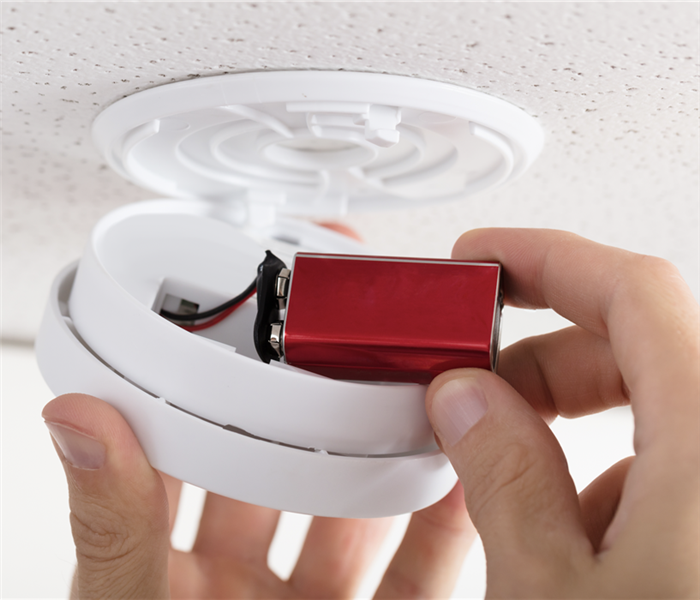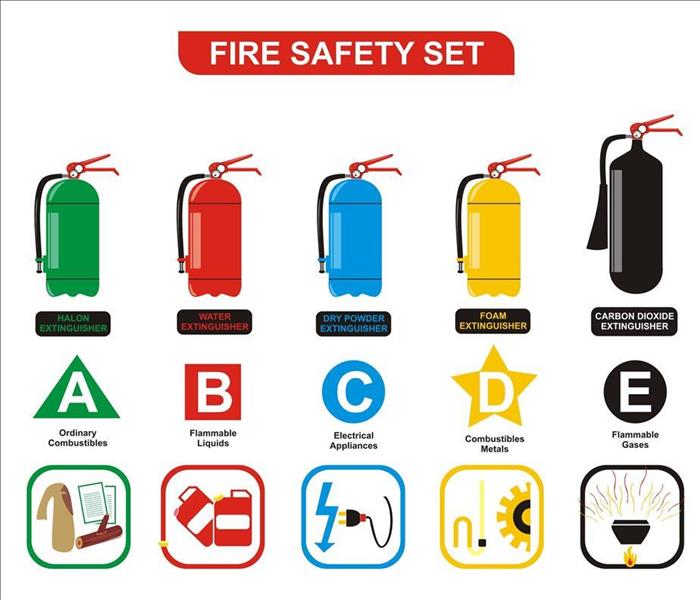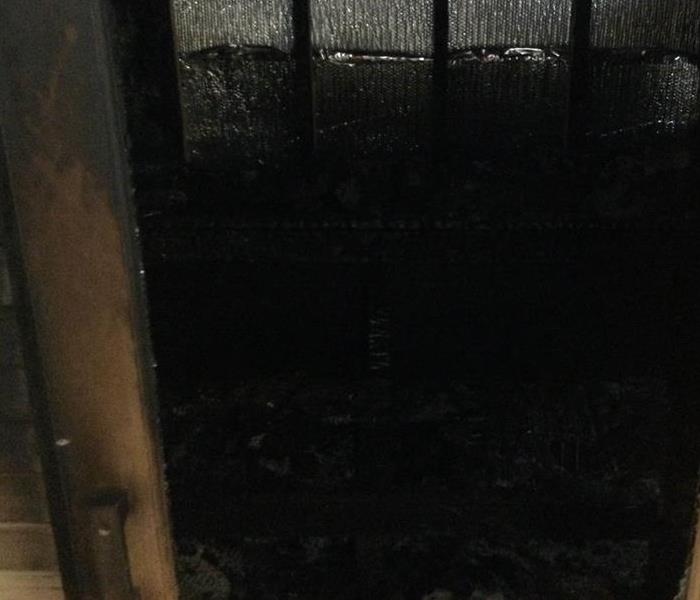Recent Fire Damage Posts
Restoring Fire-Damaged Artwork and Collectibles: Tips and Techniques
11/28/2023 (Permalink)
Experiencing a fire can be devastating, especially for art collectors and enthusiasts who have precious pieces of artwork and collectibles that have been damaged by fire. Restoring fire-damaged artwork requires a unique set of skills and techniques to ensure that the items are restored without causing further damage. In this blog, we explore tips and techniques for restoring fire-damaged artwork and collectibles.
Assessing the Damage
The first step to restoring fire-damaged artwork is to assess the extent of the damage.
Careful evaluation by experts is necessary to determine the specific restoration needs and to prevent further damage.
Cleaning Techniques
Cleaning techniques for fire-damaged artwork depend on the type of material and the extent of damage. Dust, soot, and other residues can be removed using a soft-bristled brush or a vacuum with a HEPA filter.
Dealing with Smoke Damage
Smoke damage is a severe issue with fire-damaged artwork. The affected item may require specialized cleaning methods to remove smoke stains and odors.
Restoring Paintings
Restoring paintings requires unique skills and techniques to repair smoke damage, cracks, and tears. An expert conservator can stabilize the painting, clean the surface, and retouch areas damaged by the fire.
Restoring Sculptures
Sculptures require cleaning, consolidation, and stabilization after fire damage. If the piece has cracks or chips, a conservator may use fillers such as epoxy or polyester resins to repair the damage.
Restoring Collectibles
Precious collectibles also require specialized care after fire damage. Some items may require restoration work, such as reattachment of detached pieces, cleaning of stains or smoke damage, and repainting.
Importance of Professional Restoration
Restoring fire-damaged artwork and collectibles is an intricate process that requires specialized knowledge and skills. Attempting to clean or repair damaged pieces without proper training or equipment can cause further damage to the item.
Restoring fire-damaged artwork and collectibles requires a careful assessment of the damage, appropriate cleaning techniques, and specialized restoration skills. Art conservators and restoration experts have the necessary expertise to restore precious pieces damaged by fire safely. It's important to seek their help for restoring damaged artwork and collectibles. By following the tips and techniques mentioned in this blog, art collectors can take the necessary steps towards restoring their beloved items and preserving their beauty.
Why Your Fire Alarm is Trying to Get Your Attention
8/19/2023 (Permalink)
 Your fire alarm is a lifeline between you and your family's safety.
Your fire alarm is a lifeline between you and your family's safety.
As a responsible homeowner or property owner, ensuring the safety of your loved ones and assets is a top priority. Your fire alarm plays a crucial role in safeguarding your home against potential fire hazards. When your fire alarm beeps, it's not just making noise; it's attempting to convey a vital message. Ignoring the beeping could have serious consequences. In this blog, we'll delve into the reasons behind fire alarm beeping and the importance of addressing these alerts promptly. Let's explore the various scenarios and understand why you should never ignore the beep.
Low Battery Warning
One of the most common reasons for fire alarm beeping is a low battery. When the battery in your fire alarm nears the end of its life, it will emit intermittent beeps to alert you to replace it. Ignoring this warning can leave your home vulnerable in case of a fire emergency. Always respond promptly by replacing the battery to maintain your fire alarm's effectiveness.
Sensor Malfunction
Fire alarms are equipped with sensitive sensors designed to detect smoke or heat. If a sensor malfunctions, it can trigger false alarms or constant beeping. Never overlook such occurrences, as it might indicate a potential issue with the sensor's functionality. Contact a professional to inspect and repair the fire alarm promptly.
Smoke or Dust Buildup
Dust and debris accumulation within the fire alarm can interfere with its sensors, leading to false alarms or continuous beeping. Regularly clean your fire alarm to keep it free from dust and maintain its efficiency. Avoid using water or liquid cleaners, as they may damage the unit. A gentle vacuuming or wiping with a dry cloth should suffice.
Expired Fire Alarm
Fire alarms have a limited lifespan, typically ranging from 8 to 10 years. If your fire alarm is reaching the end of its useful life, it may beep to notify you that it requires replacement. Never ignore this signal, as an outdated fire alarm may not provide reliable protection in case of a fire.
Electrical Issues
Sometimes, the beeping could be due to electrical problems, such as power surges or faulty wiring. Electrical issues may disrupt the fire alarm's proper functioning, jeopardizing your safety. If the beeping persists despite addressing other potential causes, consult an electrician to investigate and resolve any electrical problems.
Your fire alarm is a lifeline between you and your family's safety. When it beeps, it's speaking to you, and ignoring its message is not an option. Regular maintenance, timely battery replacement, and swift action to address any issues are vital to ensure your fire alarm's effectiveness. Remember, a properly functioning fire alarm can make all the difference in protecting your home and loved ones during a fire emergency. Take the beeping seriously and act promptly to maintain a secure and well-protected home.
Fire Extinguishers 101: How to Choose the Right One for Your Home or Business
4/15/2023 (Permalink)
 There are five main types of fire extinguishers.
There are five main types of fire extinguishers.
Fire extinguishers are an essential tool to have in any home or business to protect against unexpected fires. But with so many different types of fire extinguishers on the market, it can be overwhelming to determine which one is right for your specific needs. In this blog, we will discuss the different types of fire extinguishers available and provide tips on how to choose the right one for your home or business.
Types of Fire Extinguishers
There are five main types of fire extinguishers, each designed to put out specific types of fires:
- Class A: This type of fire extinguisher is designed to put out fires that involve ordinary combustibles such as wood, paper, and cloth.
- Class B: This type of fire extinguisher is designed to put out fires that involve flammable liquids such as gasoline, oil, and grease.
- Class C: This type of fire extinguisher is designed to put out fires that involve electrical equipment such as appliances, computers, and power tools.
- Class D: This type of fire extinguisher is designed to put out fires that involve flammable metals such as magnesium, titanium, and sodium.
- Class K: This type of fire extinguisher is designed to put out fires that involve cooking oils and fats commonly found in commercial kitchens.
How to Choose the Right Fire Extinguisher
When choosing a fire extinguisher, it's important to consider the type of fire you may encounter. For example, if you have a commercial kitchen, a Class K fire extinguisher would be the best choice. If you have a workshop with welding equipment, a Class D fire extinguisher would be the best choice. If you have a home with a fireplace, a Class A fire extinguisher would be the best choice.
It's also important to consider the size and weight of the fire extinguisher. A larger fire extinguisher will be able to put out a fire for a longer period of time but may be too heavy to handle for some individuals. A smaller fire extinguisher may be easier to handle, but may not have enough extinguishing agents to put out a larger fire.
In addition, it's important to ensure that the fire extinguisher is easily accessible and visible in case of an emergency. It's recommended to have at least one fire extinguisher on each floor of your home or business and to have them located near exits and high-risk areas such as kitchens and workshops.
Lastly, it's important to ensure that your fire extinguisher is properly maintained and serviced. This includes checking the pressure gauge regularly and having the fire extinguisher serviced and recharged as needed.
Fire extinguishers are an important tool to have in any home or business to protect against unexpected fires. By understanding the different types of fire extinguishers and choosing the right one for your specific needs, you can help ensure the safety of yourself and those around you. Remember to properly maintain and service your fire extinguisher to ensure it's ready to use in case of an emergency.
Top 5 Causes of House Fires
1/23/2023 (Permalink)
 A fire damaged doorway.
A fire damaged doorway.
Fires are scary and can happen to anyone. A fire can destroy your home and belongings if you aren't careful. Learn these top five causes of house fires so you can be extra careful to avoid these dangers.
Cooking
Cooking is the leading cause of house fires, according to the National Fire Protection Association (NFPA). The most common causes are unattended cooking, not turning off burners when you’re finished using them and leaving pans on the stovetop.
To prevent cooking fires:
- Don't leave food unattended while it's cooking. If you have to step away, turn off or lower the heat so that it doesn't continue to burn while you're gone.
- Use an oven mitt or towel when removing hot dishes from the oven so that you don't accidentally drop them onto your feet or nearby surfaces like wooden floors.
- Never use a microwave to heat metal objects such as a metal bowl or utensil; this increases the risk of fire.
Open-flames or candles
- Open flames or candles: If a candle is not properly extinguished and left unattended, it can cause a fire. Candles should be kept away from curtains and other flammable materials. Candles should also be kept away from children or pets who may knock over the candle while playing with it.
- Smoking in bed: It's very common for people to fall asleep while smoking before they go to sleep at night, but this is actually one of the most common causes of residential fires due to house fires. You might want to consider cutting back on how much you smoke at night if you're finding yourself going into your room late at night just so that you can have another cigarette before going to bed!
- Cooking appliances not used properly: Using cooking appliances improperly can result in an explosion or fire as well as electric shock if something falls into them when being used improperly (such as spilling hot oil). If any part of your appliance seems damaged in any way, don't use them until they are repaired by a professional service technician who knows what kind of parts need replacement first!
Smoking
Smoking is one of the leading causes of house fires. Smoking materials are flammable and can be left unattended, discarded improperly, or left in inappropriate places. If you smoke inside your home, never do so in bed. Always be very careful with a lit cigarette and ash it properly in a ashtray.
Electrical wiring
Electrical wiring is a common source of house fires. It can be damaged by water, heat, age, pests and wear and tear. This can cause your electrical outlets to spark or short-circuit, which could lead to a fire.
- Water: Electrical wires are covered in rubber or plastic sheathing that keeps moisture out of the wires themselves. If you drop your cell phone in water or spill some coffee on it and then plug it in (don't do this!), there's a chance the liquid will seep into the wiring via the charging port and cause corrosion inside where the electricity flows through at high speeds. The amount of damage depends on how much water gets into those tiny wires—and how long before you notice it—but if left untreated for too long, this corrosion can cause overheating that leads to fires!
- Age: If you live in an older home, you may already know the challenges that come with age. Materials decompose, or age in a number of different ways. It’s a good idea to get your wiring checked out if you live in an especially old home.
Heating
Heating is one of the top causes of house fires, especially if you have a gas furnace or stove. Your heating system and its components should be regularly inspected and maintained by a certified technician to ensure they're working safely and efficiently. If you see smoke or flames coming from your vents, turn off the power source immediately:
- Make sure your thermostat is set to a comfortable temperature. Don't forget to clean it every so often!
- Use fire blankets as needed to prevent small fires from becoming major ones. If the fire is contained in an area other than what you can cover with your blanket (like near a wall), use water instead of sand or baking soda—those materials could cause damage if used incorrectly..
When you need help after a fire, call SERVPRO of Downtown Houston
If you’re in need of help after a fire, SERVPRO of Downtown Houston is the company to call. We’re a locally owned and operated business that specializes in odor removal and deep cleaning. Our team offers 24-Hour emergency service and we will get your home back to its predamaged condition as fast as possible. Call us today to get started!

 24/7 Emergency Service
24/7 Emergency Service


